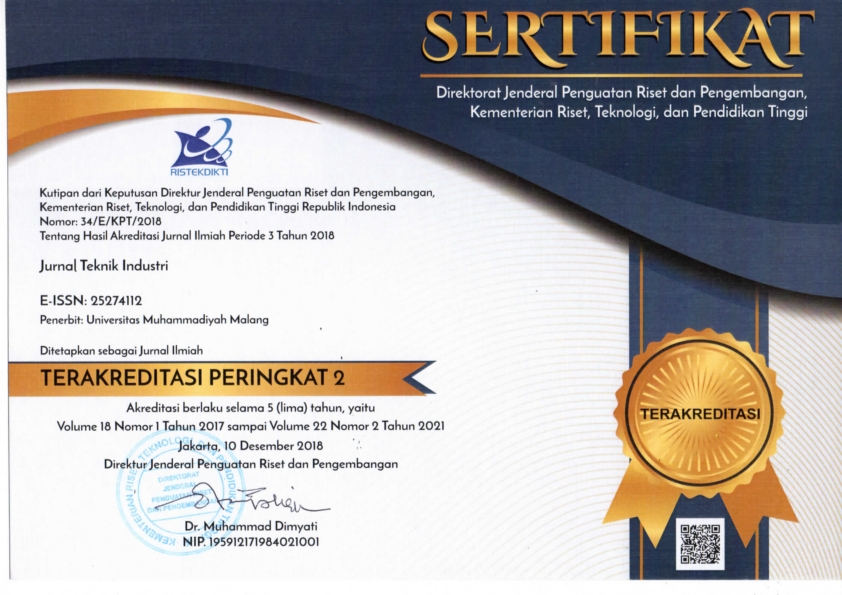Peningkatan Produktivitas Dan Kinerja Lingkungan Dengan Metode Green Productivity di PT. XYZ
DOI:
https://doi.org/10.22219/JTIUMM.Vol13.No2.126-132Keywords:
Produktivitas, Kinerja Lingkungan, Green Productivity, Benefit-Cost Ratio.Abstract
Productivity is very important for the company as a way to monitor the production performance. Productivity measurement is performed to determine the level of productivity performance of the company and can be used as guideline for continuous improvement. Similarly, the environmental aspect has become an important and strategic issues that must be addressed by the industry well and improved its performance continuously. In order to improve productivity while lowering environmental impact the company need to use Green Productivity model approach. The purposes of this research were to identify factors that affect productivity and environmental performance, as well as providing proposed improvement using Green Productivity method based on the highest value of the Benefit-Cost Ratio (BCR) index. The results showed that the factors that affect productivity and environmental performance are the boiler performance and the wastewater treatment. Therefore to overcome these problems, it was needed an improvement alternative. The improvement alternative proposed were to install Heat Exchanger and DAF (Dissoveled Air Floatation). From the estimated contribution, the chosen alternative could provide a significant increase in the productivity index of boiler at 103.64% better than the initial condition and productivity index of oil waste by 104.18% better than the initial condition, also there were decreased level of CO level at 0.19 and 0.17 for oil and fat.











